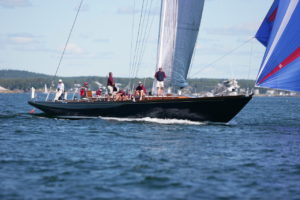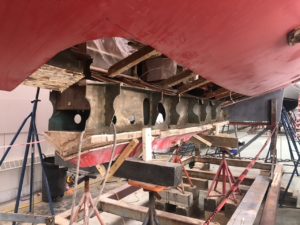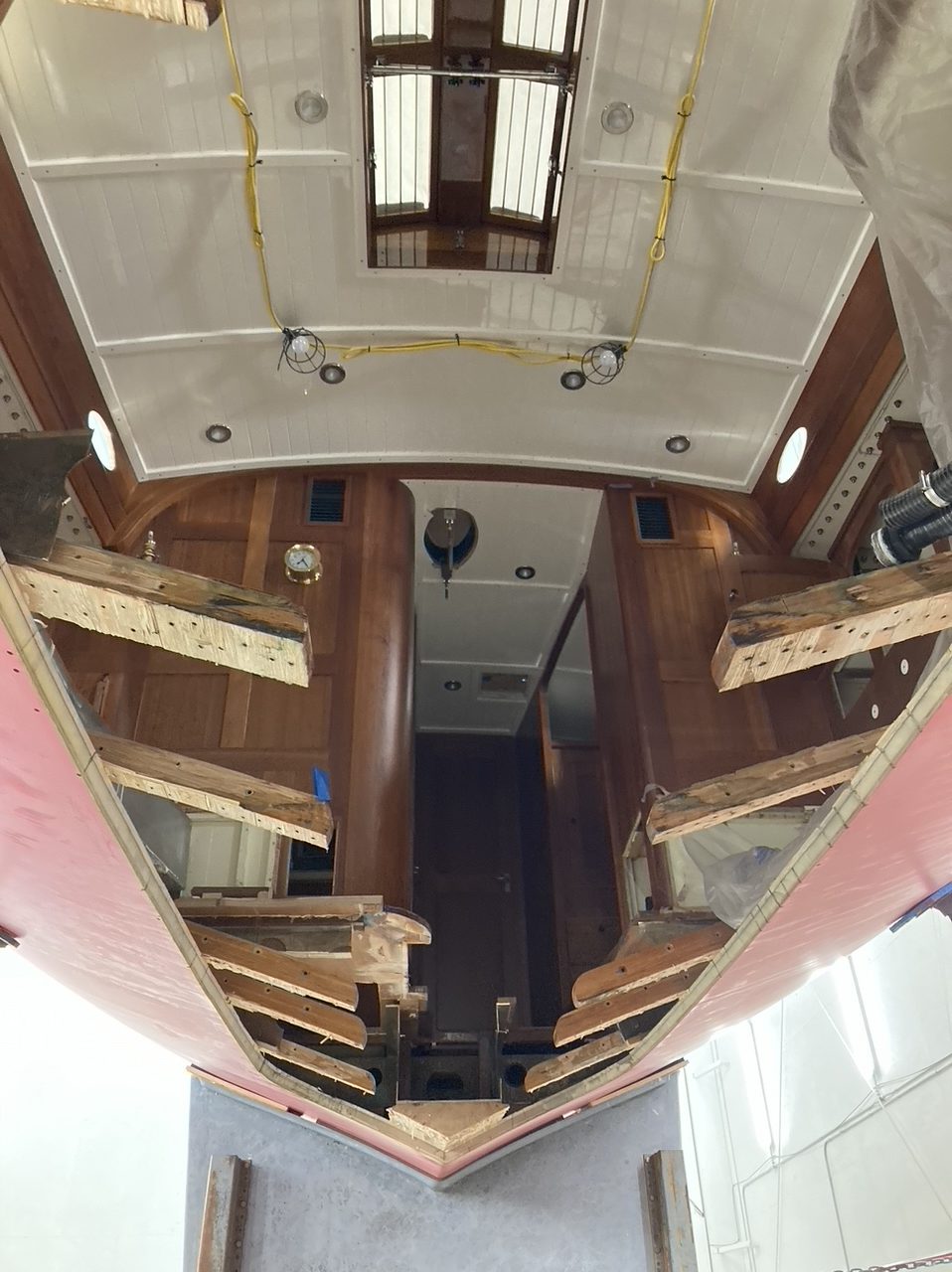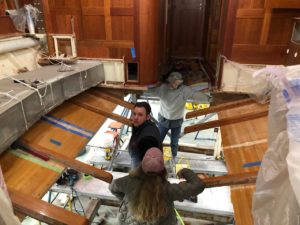
Zemphira, shown here in her previous life as Goshawk, will be better and faster when current work is completed ©Billy Black
We are always excited to tell you about our designs: whether in-build, getting refit, or living the life they were designed for. And so it was this spring we started telling you all about the thorough refit one of our favorite boats enjoyed last winter, in which we were deeply involved (Zemphira-(re)fit for a King). But as they do, stranger things happened which changed that story dramatically by creating another project and a new chapter in the life of Zemphira.
Mere hours after leaving the dock in Camden, Maine, on her maiden delivery voyage after the work was done, the newly re-fit, bright and shiny Zemphira, was speeding along at 10 knots when tragedy struck and she slammed into a granite offshore ledge. There’s little good that comes from this type of accident, but the good here was that the crew was fairly well unharmed and lovely Zemphira, floated off the ledge and returned safely and speedily to port under her own power for haulout.

After carefully excising a portion of the bronze keel support structure it is carefully lowered out of the hull leaving wood frames (ends visible) and the bronze engine beds (not visible) to be blended with the new composite keel structure ©Tyler Eads
The structure we originally designed for her—foam-cored, wood/composite hull skin and extensive internal bronze keel frame—did exactly what it was supposed to do in a catastrophic grounding—it absorbed the impact while maintaining basic structural integrity and keeping the sea on the outside. While there was considerable cracking of the exterior skin, cracking of the inside skin, and some buckling of the bronze internals, the foam remained intact and kept any leaking from occurring, the bronze keel frame kept the keel firmly attached.
With Zemphira safely ashore, we looked at a number of ways to repair her from the perspective of how we could make the already great boat even better. Our ultimate proposal and the plan we are following forward is considerably less costly than restoring her with original bronze and wood, and it offers improvements to her structural and sailing qualities as well. Her owner had already considered replacing her keel with a faster, lower-resistance keel the year before, but had shelved the idea considering time constraints during the prior winter’s work. Given this new reality, however, we are unleashed to give him the performance he wants.

Lowered out of the hull you can see the cut bronze frames that released this substantial structure which will be replaced with a carbon-fiber composite keel box and new keel design ©Tyler Eads
Our restoration method exchanges the cracked portions of wood and foam hull skin at the forward and aft ends of the keel fin for a molded composite part, and we opted for the composite internal structure to replace the bronze plate internal structure. Molding these parts to our original 3D files is faster to build and lighter-weight than replacing the cold-molded wood structure piece-by-piece. It also allowed us to make a big change to the attachment method for the keel fin–we’ll design a smaller, lower-drag foil and fin than the original. We’re using a socket-style attachment detail to receive the top of the keel. This will be molded into composite parts replacing the bottom. And, to secure the keel, instead of counting on highly-loaded vertical bolts inside the fin, we have a very simple pin arrangement. This socket also includes an innovation that we’ll get into later! In the meantime, we are developing drawings for internal components, creating laminate schedules, designing the lap/scarf joint connection between the new hull portion and the existing cored skin, and creating 3D computer files for mold carving on the Lyman-Morse CNC machines.

With the excision complete the hull construction and wood frames are clearly visible . . . as is the interior from below . . . ©Tyler Eads

With the plan in hand and files moving from us to Lyman-Morse, the build crew’s first steps are: remove the cracked hull skin and undamaged keelson, carve out the bronze longitudinal and transverse floors that will be replaced with the carbon-fiber structure supporting the new keel, while leaving in place the aft several feet of bronze structure that form the engine bed.
When this refit/repair/upgrade to Zemphira is complete, she will be better for it in many respects. This design and her construction exemplify how to build yachts to a high standard that keeps the crews safe and the boats floating. She’ll be just as safe as always–only faster!
Follow along as Zemphira progresses toward her next launch date. We hope you’ll follow this story over the winter months, we’ll cover it in future emails, and we’ll be posting on our Instagram and Facebook pages